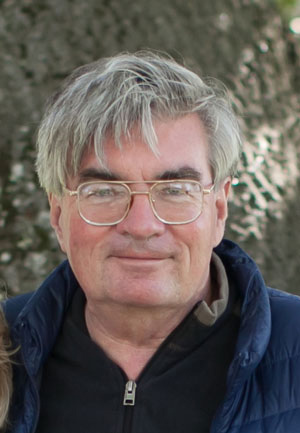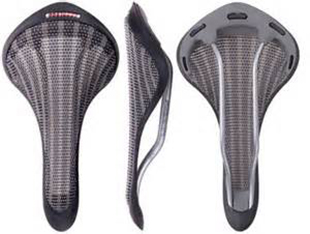

Developing & Bringing New Products to Market
Part 3: Product Design
by John Neugent
Tech articles | Commentary articles | Product Development series part 2 | Product Development series part 4
The late John Neugent probably knew more about bicycle wheels than anyone else. Maybe more about bikes as well. He spent his life in the bike business, at every level. He owned Neugent Cycling, a firm devoted to delivering world-class equipment at the lowest possible price. —Chairman Bill

John Neugent

Plato's dialogue Apology is available as an audiobook here. For the Kindle eBook version, just click on the Amazon link on the right.
John Neugent writes:
Tom Ritchey was famous for drawing up some rough sketches to give to the manufacturers for new designs. I don’t know but assume, those days are long gone. Even a very simple design can be difficult.
If you are making parts in Asia, as most bike people are, there’s the simple matter of language. When I first started travelling there in the early '80s one of my first impressions was that my boss, who had a great deal of experience in dealing with foreigners, would talk with extremely simple words, which I thought was demeaning. Gary Coffrin, who was a buyer at Specialized told me his standard operating procedure was to tell the vendor what he wanted and then have the repeat it back to him. In the vast majority of cases, what he heard back was not what he told them.
When I hired one of the top wheel builders at the turn of the century, I told him he needed to speak in very simple terms. He continued to use Northern Cal slangs that the Taiwanese could never understand. No matter how many times I told him not to do it, he persisted.
So even on a basic level, communication is difficult. When you combine that with engineering and design it’s much more difficult. The advent of 3D cad software has make the task much more refined but there are always challenges.
Leonardo Da Vinci was very famous for inventing things way before anyone could make them, but he didn’t invent them at all because the technology wasn’t yet available to actually make the product. Some people in the bike industry tend to do the same thing. Back when there were trade shows, companies would invent “vaporware.” Products that were technically leading edge but in reality could not be made. It got the attention of the press and lots of free advertising which was really the purpose of introducing it.I got hung up with this myself when I tried to introduce the SaddleCo saddle. It was, I thought, the most brilliant saddle ever invented. I was hired by a group that included the inventor and some money people. It’s a complicated story that involved not having enough money, limited inside design ability (although we thought we knew more than anyone), lack of intellectual property rights for the manufacturing process, and ultimately a lack of a patent. And it was far more complicated than that. I still believe to this day, that if the product was properly developed and marketed, it would hands down be the best saddle in the world. Such is the life of product development.

The great saddle we can't have.
I also had the honor of working with a true top level development team. I first met them when I was working with EV Global Motors on an electric bike project in the mid '90s, and later when Sachs, for which I ran the US office used them to develop derailleurs and shifters. They had a designer who was a bike guy and a brilliant engineer. The designer was making the transition of designing with drawings to designing in cad. His hand sketches had to be given to the engineer who would then make 3D models in Solidworks. This is far more complicated than it seems since the engineer had to figure out how to actually manufacture the product before he could design it.
Most people are unaware that one of the biggest advances in bicycle frame design came as an offshoot of automobile engineering called hydroforming. Up until the last 20 years tubes were either straight gauge or double butted. Hydroforming allows tubes to be formed in almost any shape and dimension by using high pressure oil to form whatever shape you want. This when married with aluminum makes one of the best performing and least expensive frames out there. Robert Reisinger, the founder of Mountain Cycle, was the inventor of the first monocoque bicycle frame, amongst other firsts. He’s an ex motorcycle racer and manufacturing engineer that went to work for Kinesis to develop some of the first hydroformed frames in Taiwan.
For all of those with the bug to invent, I would suggest investing in one very important program: Rhino3d.com https://www.rhino3d.com/ It’s a windows based 3D cad program that allows you to design in 3D and is powerful enough to do very complicated design work. It’s a one time purchase so there is no need to pay annual fees like other 3D programs and also has add ons for rendering software that allows you to create photorealistic images. I used it heavily to design hub shapes. I would not engineer the hub but would get drawings of the forgings that would show me how much material I had to work with and then sent over 3D drawings for them to create my versions. I also spent a lot of time just playing with it to come up with different product designs. Not being an engineer I don’t know the tolerance for something like a slip fit or press fit in a bearing so I left all of that up to the manufacturing engineers. If you are designing new products, like wheels, it also makes you focus on more detail.
There are lots of issues that complicate design. Now most major companies have qualified staff to deal with all of this but it often takes years to develop staff and just as importantly, qualified vendors, to get quality products developed on time.
John Neugent was was one of the first to establish quality hand building in Taiwan around the turn of the century. He now owns Neugent Cycling, a firm devoted to delivering world-class equipment at the lowest possible price.







